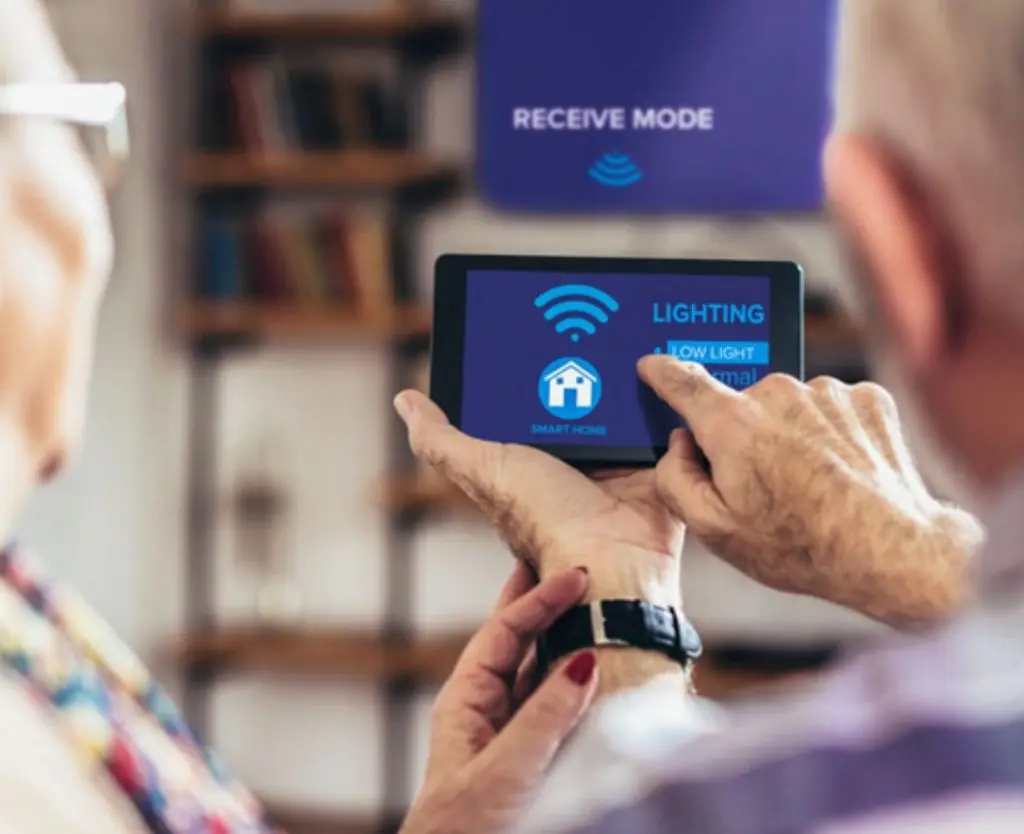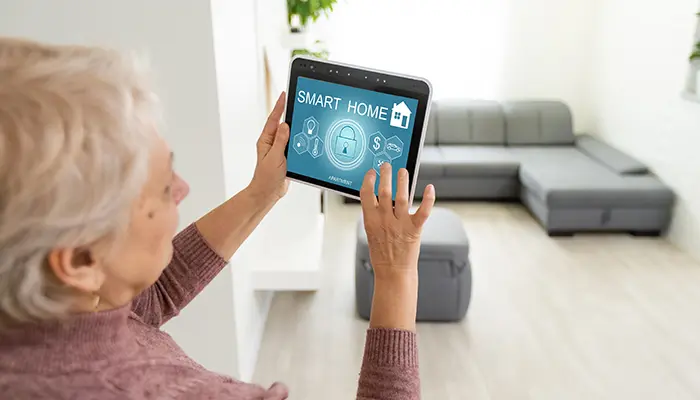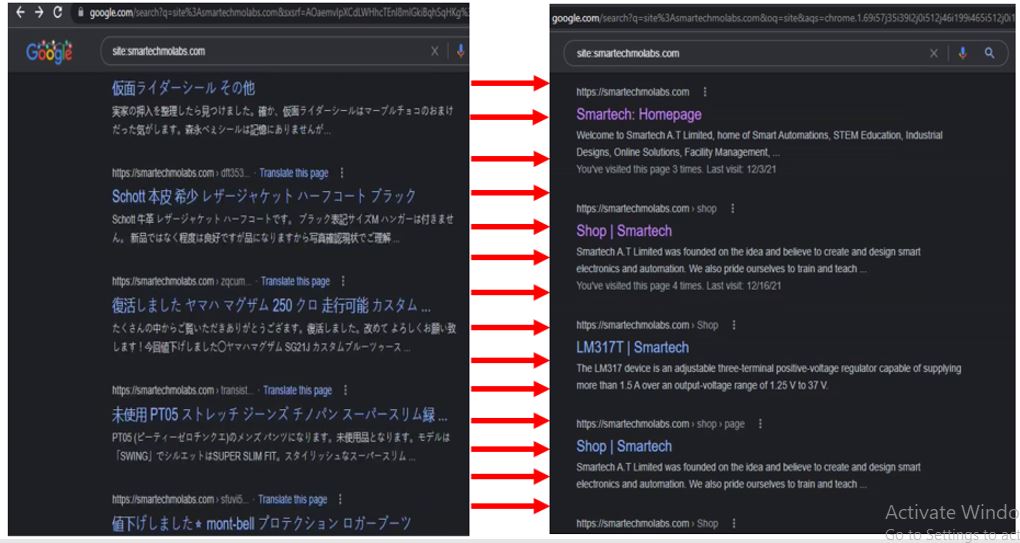Hey everyone! Ever worry about our amazing elders staying safe and sound at home? I know I do! As our loved ones age, those little things we take for granted can become real challenges. But guess what? Technology is stepping up in a big way, and it’s all thanks to these super cool gadgets called smart sensors.
Think of smart sensors as tiny, watchful eyes and ears scattered around the house. They’re not creepy spies, I promise! Instead, they’re like silent guardians, constantly monitoring and ready to alert someone if something isn’t quite right. And when it comes to keeping our seniors safe and independent, these little wonders are a total game-changer.

The Rising Need for Enhanced Senior Home Safety
Why all the fuss about senior home safety anyway? Well, as we get older, the risk of falls, accidents, and even just forgetting things increases. Living alone can bring a sense of independence, which is fantastic, but it also means there might not be someone around to help immediately if something goes wrong.
According to the National Institute on Aging, falls are a leading cause of injury among older adults.1 And it’s not just falls; things like medication mismanagement or even wandering can pose serious risks. That’s where smart home technology, powered by these brilliant sensors, comes into the picture.
What Exactly Are These “Smart Sensors”?
Okay, so we’ve talked about them, but what are smart sensors? Simply put, they are electronic devices that can detect changes in their environment – things like motion, temperature, light, sound, or even pressure. What makes them “smart” is their ability to connect to a network (usually Wi-Fi) and communicate this information to other devices, like smartphones or monitoring systems.
Think of it like this: a regular smoke detector just screams when it senses smoke. A smart smoke detector can also send an alert to your phone, even if you’re miles away, and maybe even tell you which room the smoke is coming from!4 Pretty neat, huh?
How Smart Sensors Are Revolutionizing Senior Safety (The Nitty-Gritty)
Now for the exciting part! Let’s break down the specific ways smart sensors are making a real difference in senior home safety:
1. Fall Detection: Catching a Fall Before It’s Too Late
This is a big one. Falls can have serious consequences for seniors. Smart sensors equipped with accelerometers and gyroscopes can detect sudden changes in movement and posture that might indicate a fall. Some are worn as pendants or wristbands, while others can be integrated into the flooring or furniture.
Imagine your grandma taking a tumble in the living room. A traditional system might rely on her being able to reach a button for help. But a smart fall detection sensor can automatically send an alert to a caregiver or emergency services the moment it detects a fall, even if she’s unable to call for help herself.6 Talk about peace of mind!
2. Motion Sensors: Keeping an Eye on Activity Patterns
Motion sensors can track movement within the home. This might seem simple, but it can provide valuable insights into a senior’s well-being. For example, a sudden decrease in activity could indicate a health issue, while unusual night time wandering could be a sign of confusion.
Think of it like having a silent observer who learns your loved one’s routine. If that routine suddenly changes, it can trigger an alert, allowing for a proactive check-in.
3. Door and Window Sensors: Ensuring Security and Preventing Wandering
These sensors are placed on doors and windows and can alert caregivers if they are opened unexpectedly.8 This is particularly helpful for seniors who might be prone to wandering due to cognitive conditions. It can also enhance home security, notifying you of any unauthorized entry.
It’s like having an invisible perimeter around the house, letting you know if anything is amiss.
4. Medication Management: Never Missing a Dose Again
Forgetting to take medication can have serious health consequences. Smart pill dispensers, often integrated with sensors, can remind seniors when it’s time to take their medication and even dispense the correct dosage. Some systems can also alert caregivers if a dose is missed.
This is like having a personal, tireless medication assistant, ensuring your loved one stays on track with their prescriptions.
5. Environmental Monitoring: Creating a Comfortable and Safe Space
Smart sensors can also monitor environmental factors like temperature, humidity, and air quality. Extreme temperatures can be dangerous for seniors, and poor air quality can exacerbate respiratory issues. These sensors can send alerts if conditions become unsafe.
Imagine getting a notification that your grandpa’s living room is getting too hot – you can call him and remind him to turn on the AC, even if he hasn’t noticed.
6. Smart Smoke and Carbon Monoxide Detectors: Early Warning Saves Lives
We touched on this earlier, but smart smoke and carbon monoxide detectors go beyond traditional alarms. They provide early warnings via smartphone notifications, allowing for quicker responses, even when you’re not home. Some can even pinpoint the location of the danger within the house.
It’s like having a super-sensitive nose that can alert you to danger from anywhere.
7. Wearable Technology: Safety on the Go
Beyond in-home sensors, wearable devices like smartwatches and pendants equipped with GPS and emergency SOS buttons offer an added layer of safety when seniors are out and about. They can be used to track location in case of wandering and allow for quick access to help in an emergency.
Think of it as a personal safety net that goes wherever your loved one goes.

The User-Friendly Factor: Designed with Seniors in Mind
One of the biggest concerns about technology for seniors is often its complexity. But the beauty of many of these smart sensor systems is their user-friendly design. Many feature simple interfaces, voice control options, and easy installation. The goal is to enhance safety without adding unnecessary stress or confusion.
It’s like creating technology that seamlessly integrates into daily life, making things easier, not harder.
Addressing Privacy Concerns: Respecting Dignity and Data
Of course, with any technology that involves monitoring, privacy is a valid concern. Reputable smart home safety systems prioritize data security and transparency. It’s crucial to choose systems from trusted providers who are upfront about how data is collected and used. The goal is to enhance safety while fully respecting the senior’s privacy and dignity.
It’s about finding that balance between security and respecting personal boundaries.
The Future is Smart: Continued Innovation in Senior Safety
The field of smart sensor technology is constantly evolving. We can expect to see even more innovative solutions in the future, perhaps integrating artificial intelligence for even more proactive and personalized safety measures. Think of systems that can learn a senior’s habits and predict potential risks before they even happen!
The possibilities are truly exciting, and the potential to improve the lives and safety of our aging loved ones is immense.
Conclusion: Empowering Seniors Through Smart Technology
Smart sensors aren’t just gadgets; they’re tools that can empower seniors to live more safely and independently in their own homes for longer. By providing discreet monitoring, timely alerts, and helpful reminders, these technologies offer invaluable support to both seniors and their caregivers. As technology continues to advance, smart sensors will undoubtedly play an even bigger role in ensuring the well-being and peace of mind of our aging population. It’s like giving our loved ones an extra layer of care and protection, all thanks to the power of smart technology.
Frequently Asked Questions (FAQs):
- Are smart sensors difficult for seniors to use? Not necessarily! Many systems are designed with simplicity in mind, featuring user-friendly interfaces, voice control, and easy setup.13 It’s all about choosing the right system that fits the individual’s needs and comfort level.
- Do smart sensors invade a senior’s privacy? Reputable systems prioritize privacy and data security. It’s important to choose trusted providers who are transparent about their data handling practices and allow for customization of monitoring settings.
- How much do smart sensor systems typically cost? The cost can vary depending on the complexity of the system and the number of sensors involved. There are options available for a range of budgets, and the peace of mind they offer is often considered a worthwhile investment.
- Can smart sensors prevent all accidents? While smart sensors can significantly reduce the risk of accidents and ensure quicker help in emergencies, they can’t prevent every single incident. They act as a valuable safety net and early warning system.
- Where can I learn more about specific smart sensor systems for seniors? There are many resources available online, including tech review websites, senior care organizations, and manufacturers’ websites. Consulting with healthcare professionals or aging-in-place specialists can also provide valuable guidance.

